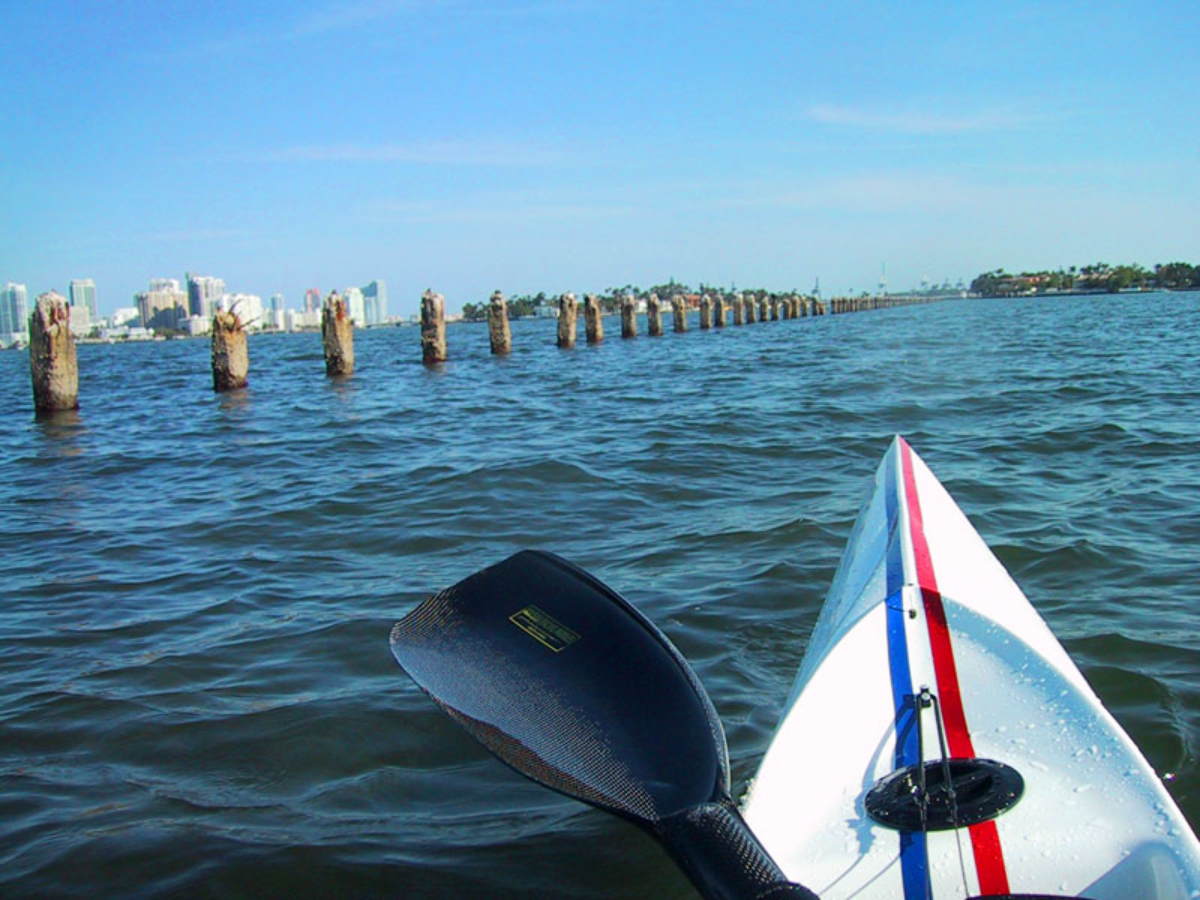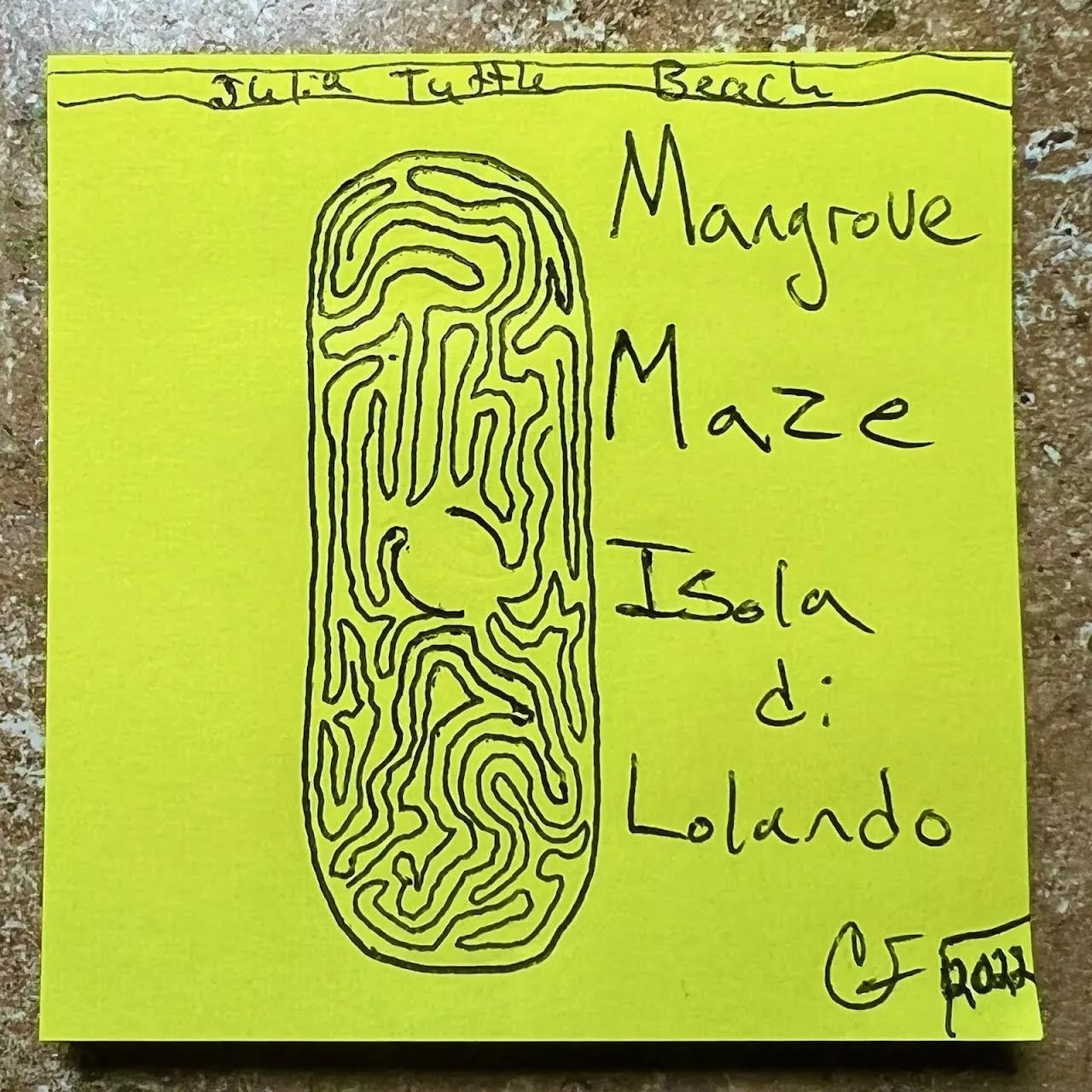
Screenshot via Google Earth

Audio By Carbonatix
Off the Julia Tuttle Causeway’s southern shore in the middle of Biscayne Bay lie the remains of a long-forgotten dream. Dozens of concrete stakes reach out from the water at low tide like fingers grasping for their lost potential. What could have been a landmark symbolizing man’s dominance over nature now serves as perches for pelicans and other seabirds – and it’s totally covered in bird shit.
These are the ruins of Isola di Lolando, a manmade island proposed in 1926 as part of the Venetian Isles project. The large rectangular development was designed to run perpendicular to the Venetian Causeway, and slated to be the first of five manmade islands with elaborate Italian names like Isola di Capri and Isola di Torcello. The developers, the North Venetian Islands Company, imagined large, Italian-style belfry towers on each one, and promised investors and would-be buyers in advertisements in the Miami Herald a slice of Venice in America amid South Florida’s 1920s real estate boom.

From the February 3, 1926, Miami Herald: the first stakes driven into Biscayne Bay for Isola di Lolando as part of the failed Venetian Isles project
Photo from Miami Herald archives via Newspapers.com
But there was a market crash in the mid-1920s (several years before the Great Depression), and then a barge working on the island overturned, drowning the crew, during the hurricane of 1926. Soon after the stakes had been planted in the bay for Isola di Lolando, the entire North Venetian Islands project was abandoned.
Nearly 100 years later, the stakes are a watery testament to Miami developers’ tendency to overpromise and underdeliver. But one local environmental advocate has a new vision for the relics, one that flips the man-versus-nature motif on its head.
“I want to create a mangrove maze that will be visible from space,” declares Colin Foord, marine biologist and cofounder of the underwater media platform Coral Morphologic. “This project is more of a 21st-century approach of taking what was meant to be an artificial island and creating something that makes nature take over what was previously meant to be artificial.”

The stakes that were the underpinnings of what was supposed to be Isola di Lolando in Biscayne Bay
Photo by Sobesurfski/Wikipedia
Foord tells New Times of the plan he’s had for the Isola di Lolando site for the past six years: a biological tourist attraction utilizing mangroves, sea sponges, seagrass, and oysters to create a natural labyrinth that will be equal parts art installation and practical seawall.
Visitors could kayak and paddleboard through the maze, but the mangroves would also serve as natural storm-wind barriers and biological water filters. Foord explains that the strong water currents off the Julia Tuttle would maximize the mangroves’ ability to filter pollutants from the bay water.
With Miami already experiencing rising tides, fish kills, and massive seagrass dieoffs, Foord believes Miami should be enacting projects that put the environment front and center.
“If people are serious about doing radical interventions, it makes sense to use this as a kind of teaspoon of sugar to help the medicine go down,” he says.
The only mockup or rendering Foord has of the maze is a doodle he made on a Post-It note, but he thinks the limelight on Miami’s start-up and tech scene makes this the right moment to bring the project to fruition.
“People are concerned about the digital economy with cryptocurrency and its carbon footprint. As these tech companies are trying to appear environmentally sustainable, they need to offset their carbon emissions in some capacity, and funding this would be a way to put their money where their mouth is,” he argues.

Foord’s mock-up of the mangrove maze
Photo courtesy of Colin Foord
Other proposals from the City of Miami Beach for the Isola di Lolando site – such as filling it with the crud dredged during the Port Miami Tunnel – have failed in the past.
But in May, Foord will speak at the Aspen Ideas Conference, an online festival focused on climate, public health, and technology, and he intends to formally propose his mangrove maze.
“They want big ideas?” he says. “This is a big idea.”